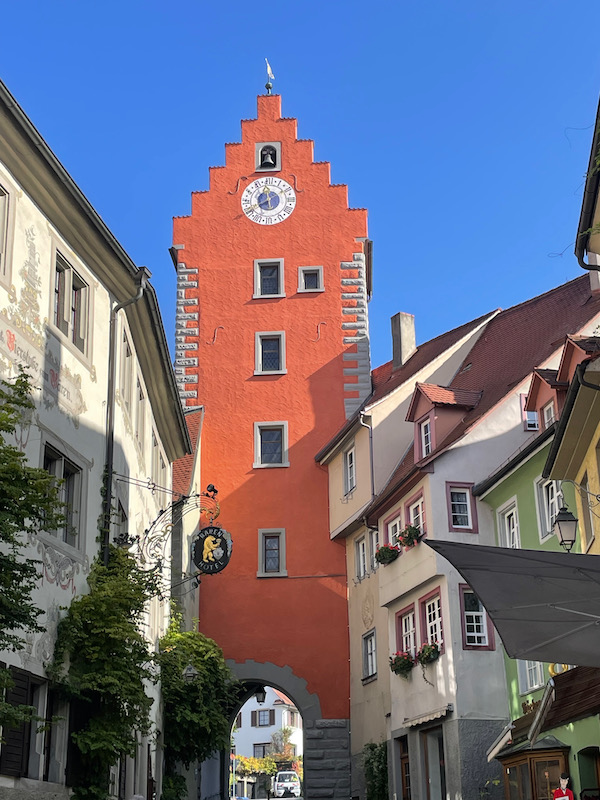Our Blog - Germany 2023 - Meersburg, Germany
Meersburg is known for its medieval city. The name of the town means "Castle on the Sea", referring to the "Old Castle" which supposedly was built here in 630 by the Merovingian king Dagobert I, making it one of the oldest surviving castles in Germany. In addition to this "Old Castle, there is also a "New Castle" that was built in the 18th century. Originally the residence of the bishop of Constance, it was used for various purposes after the Secularization of 1803. There is also an expanse of half-timbered houses, and two medieval town gates, which are the remains of the fortification.
Our first stop was at the Mariä Heimsuchung church. There is evidence of a church building here as early as the 13th century and the bottom of the tower dates back to this time. In 1824, that church was demolished but the tower remained. The new church building was completed in 1833.
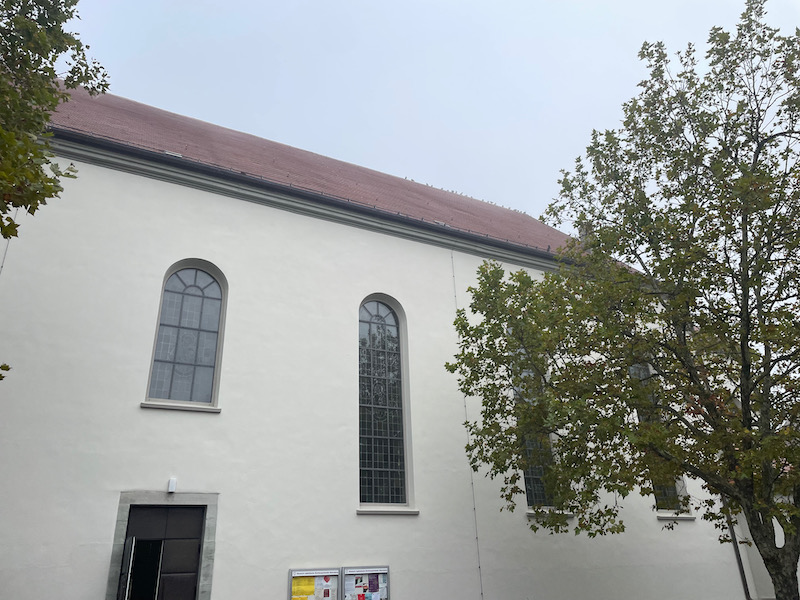
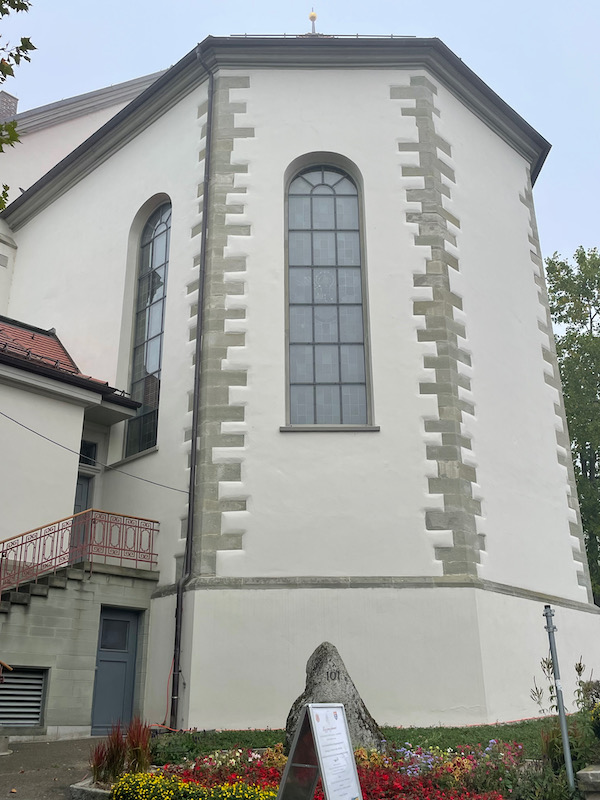
The church interior is built in the classicist so-called "Weinbrenner style". This style of church is so different than what we are used to seeing, and actually reminds us more of a church in the US (like in Boston or Philadelphia) than in Europe. There are no side aisles, no side altars, a much lower ceiling, and lots of moulding. At the back of the church was this painted Pieta.
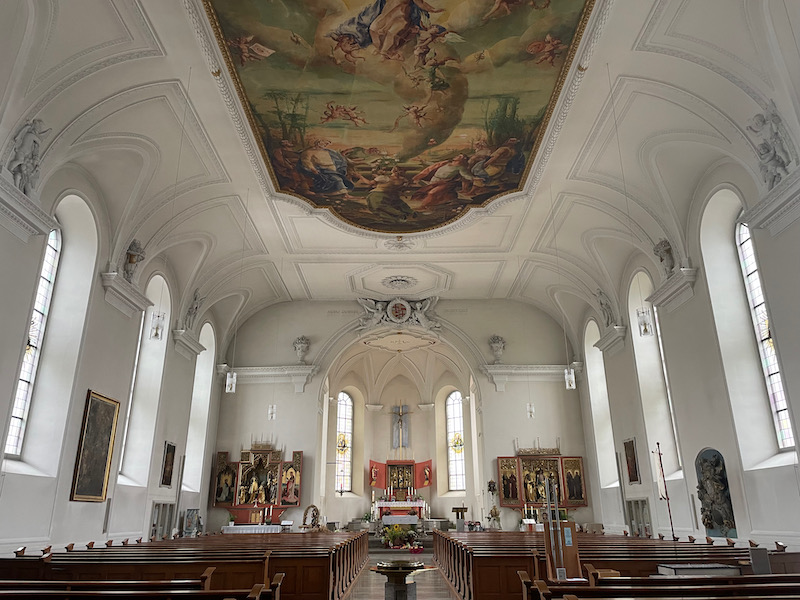
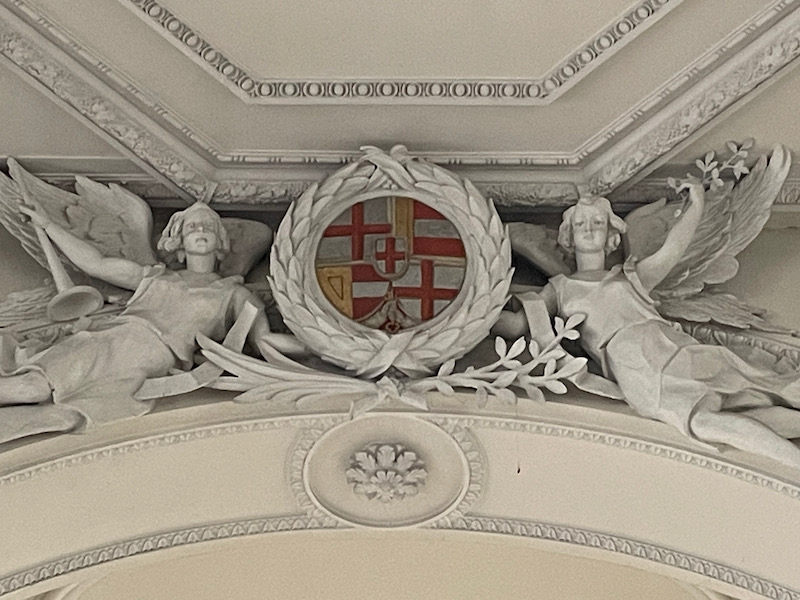
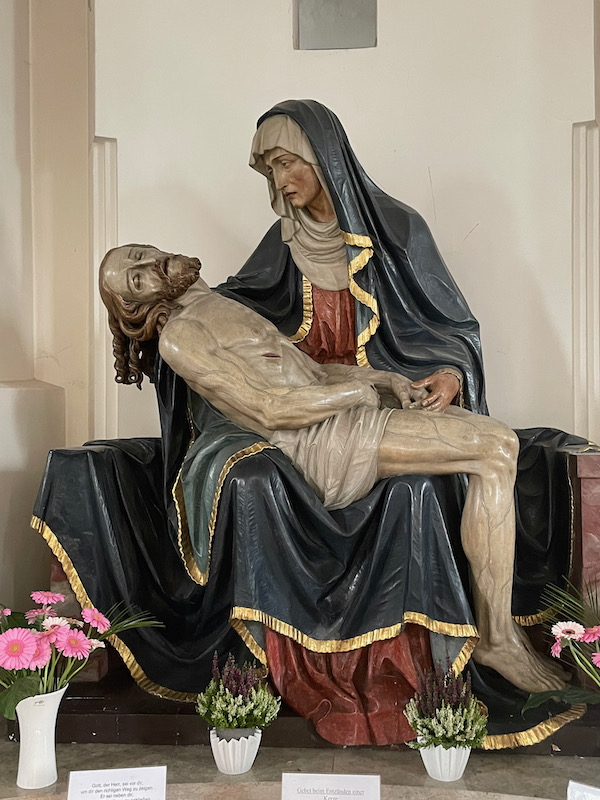
Most of the stained-glass windows are very slightly tinted and they let in tons of light. In the middle of each is a medallion with a Saint.
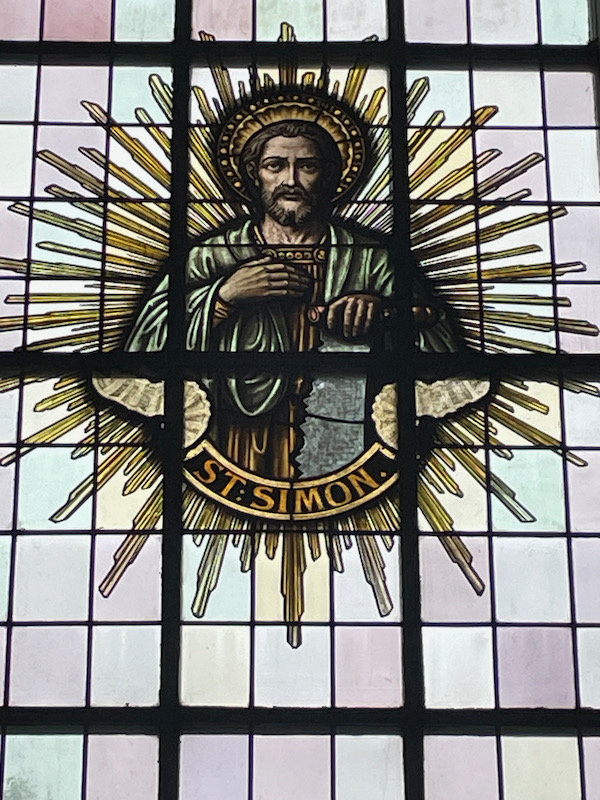
The ceilings were designed in 1939 and 1940 with a large ceiling picture in the style and spirit of the late 30s.
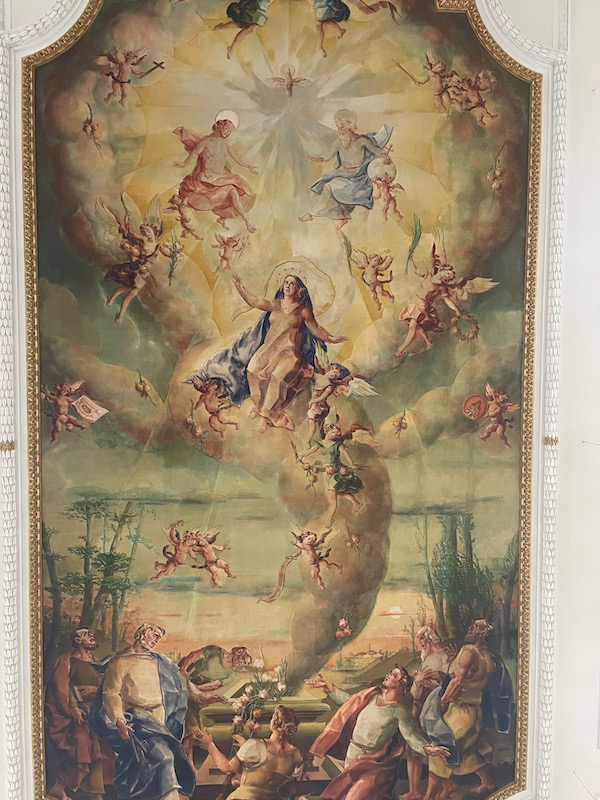
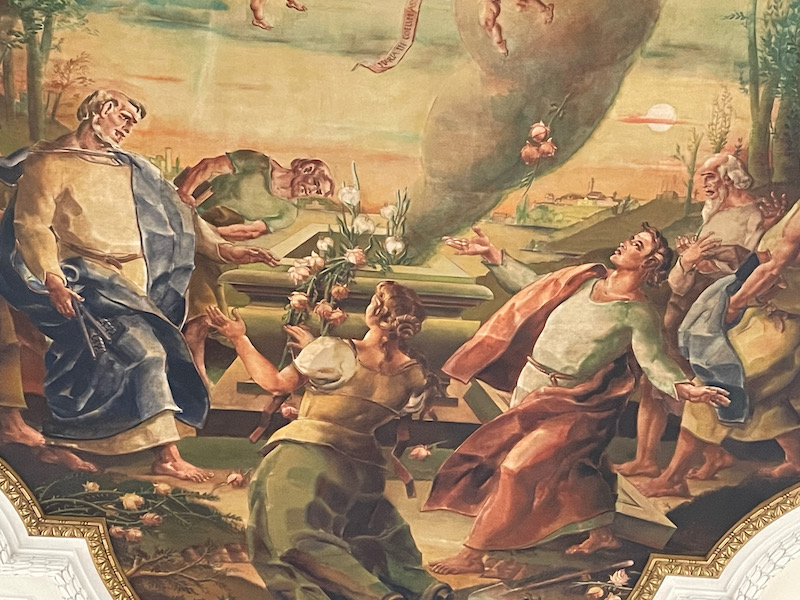
The 3 altar pieces have the same style, which is that of a late Gothic shrine from the 15th century, with a central scene and 2 wings. The left and right altars were created in 1899 in a workshop in Überlingen. The left side altar shows the Visitation, the meeting of the pregnant Mary with Elizabeth. Also shown are Zacharias, Elisabeth's husband, and two angels next to the Mother of God. On the sides are saints Aloysius of Gonganza and Agnes (these are painted while the central scene is carved).
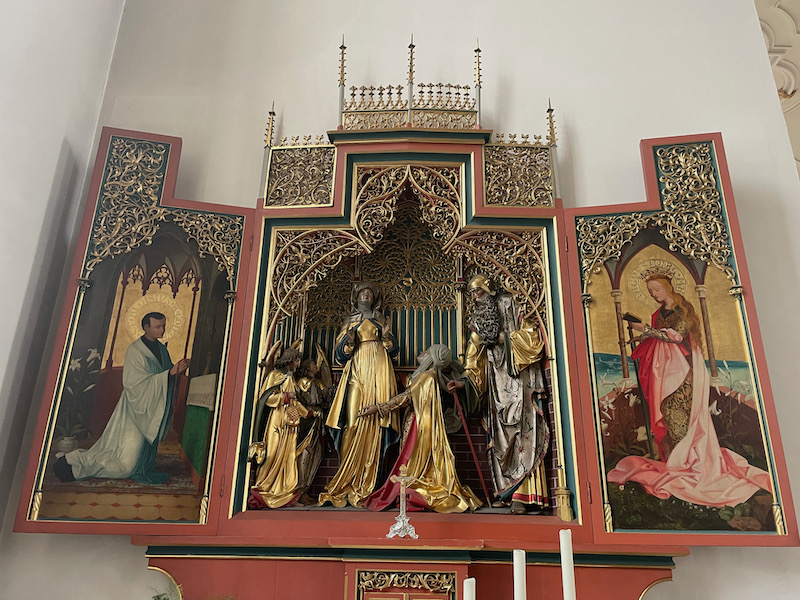
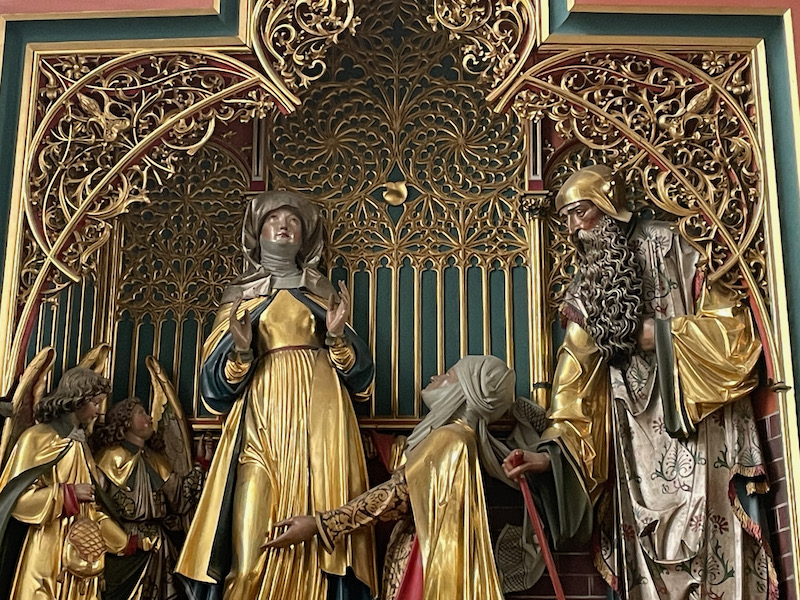
The right side altar is dedicated to St. Sebastian, who is shown in the middle of the center scene. Next to him are the saints Gallus and Boniface (left wing), Benedict and Francis (central scene), and Otmar and Fridolin (right wing).
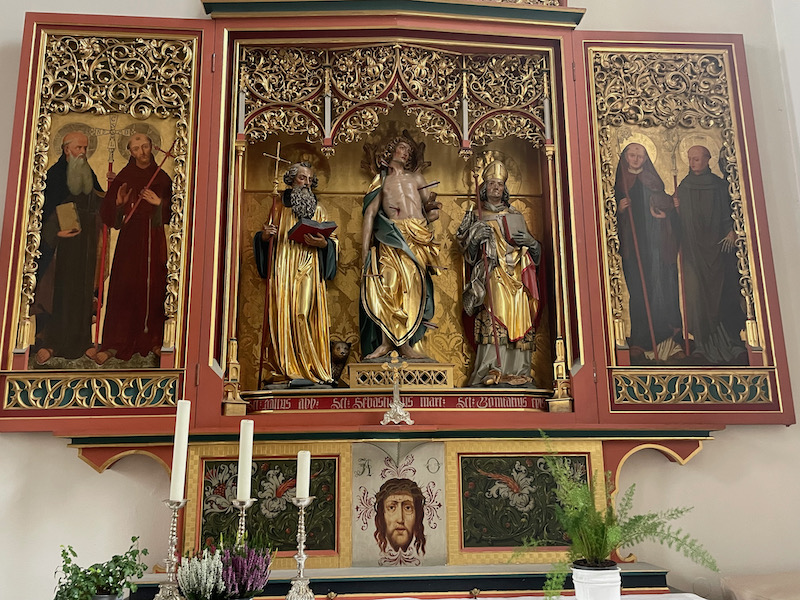
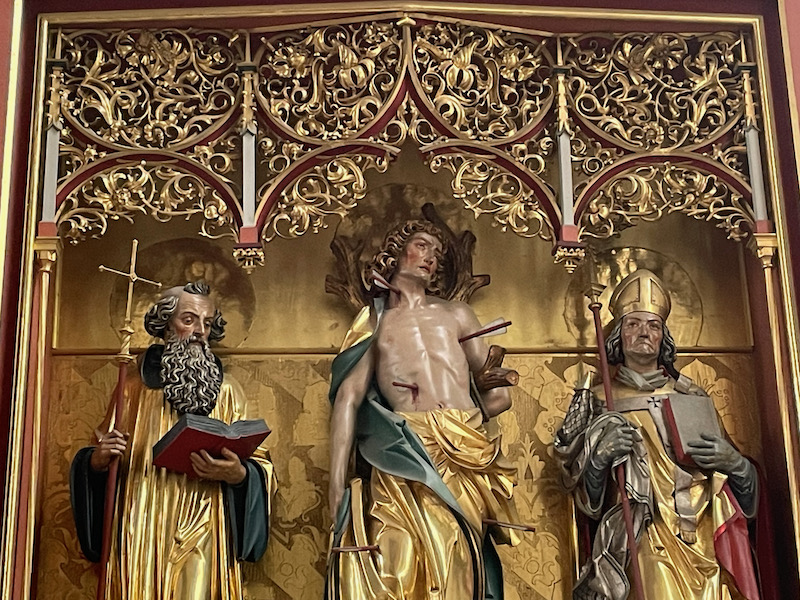
The main altar shows Mary with the baby Jesus, surrounded by various saints. The two saints on the wing are St. (Bishop) Konrad and St. Pelagius. With this altar, everything is carved instead of having the wings painted. In front of the altar was a set of baskets with various fall harvests (these were real fruit, so I assume they are changed out frequently).
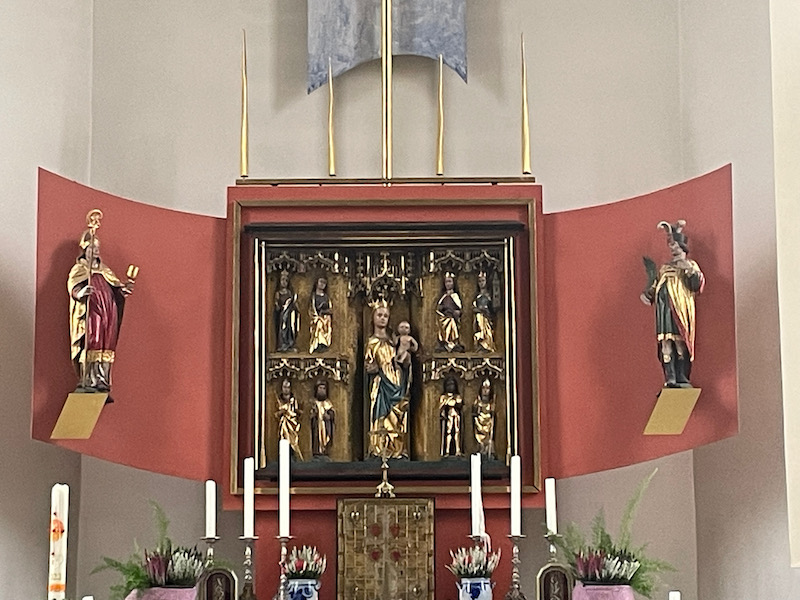
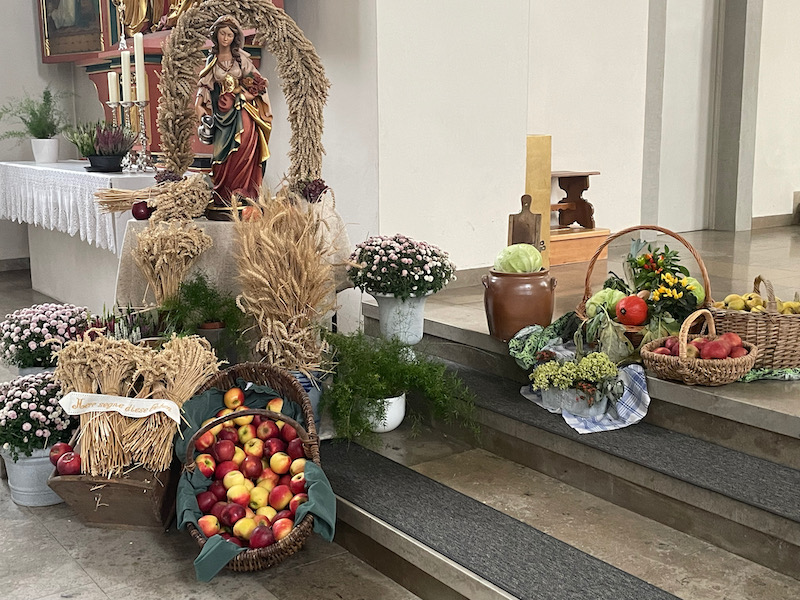
The building across from the church would seem to be a pharmacy, but I thought the paintings on the side of the building were interesting.
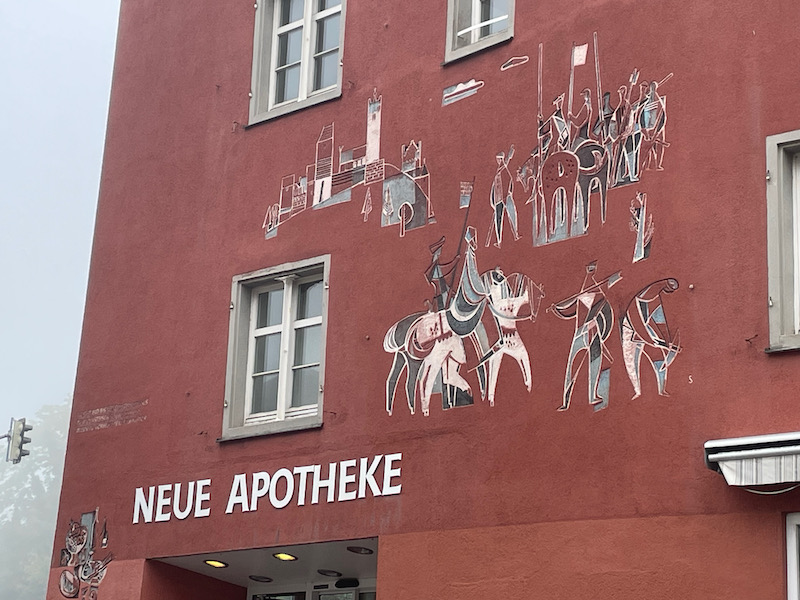
And these are just various buildings in the old town, where there were quite a few half-timbered houses. There was also a nice turret for a hotel, the Gasthof zum Bären. The decor of this turret was designed in 1954 with scenes depicting the history of the house. Shown are Bishop Hugo von Hohenlandenberg as the founder of the inn's shield rights in 1510, the bear with a walking stick as a heraldic animal, the function of the inn as a drinking room, and its use as a post office from 1860 to 1890.
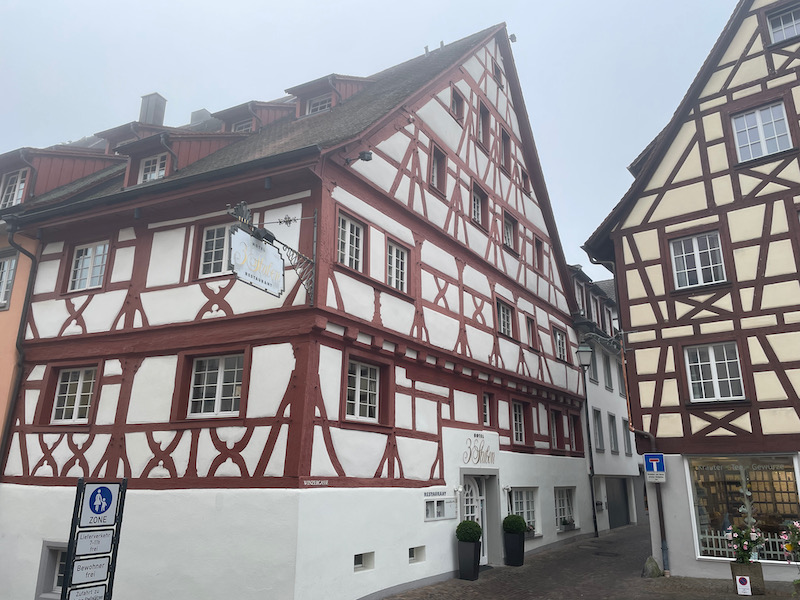
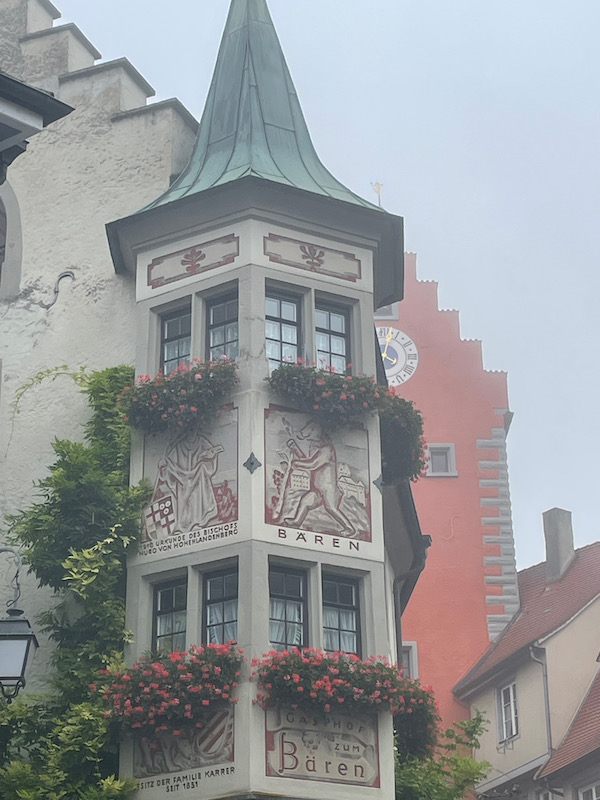
A bit on the hazy side due to the fog, this is the New Castle At the beginning of the 16th century, the Prince-Bishops of Constance moved their residence from the Bishopric of Constance, which had become protestant, to the town of Meersburg. In 1710, Prince-Bishop Johann Franz Schenk von Stauffenberg began to build a new palace next to the Old Palace. We decided to skip the tour here, although it is open to the public.
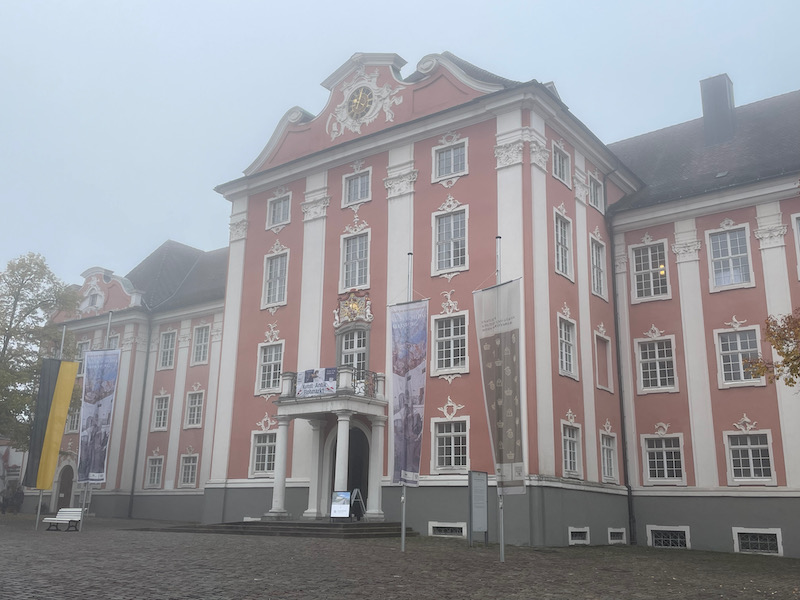
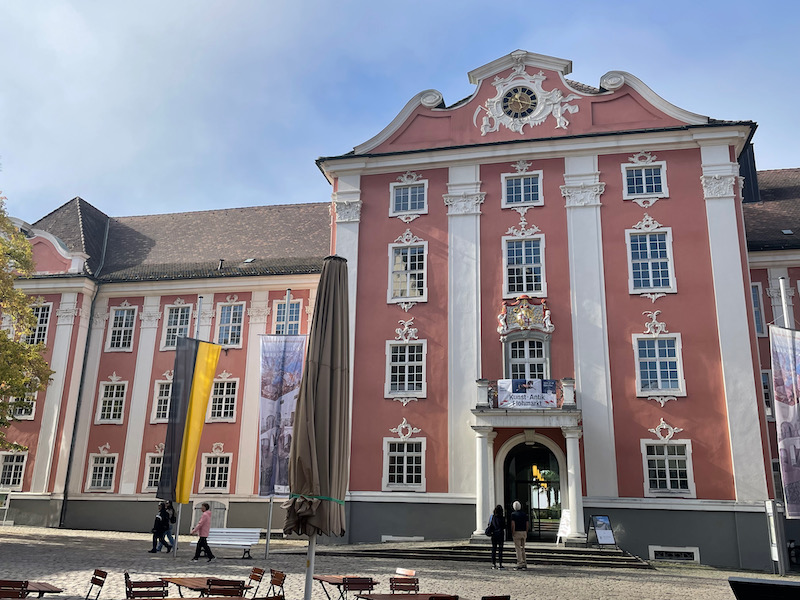
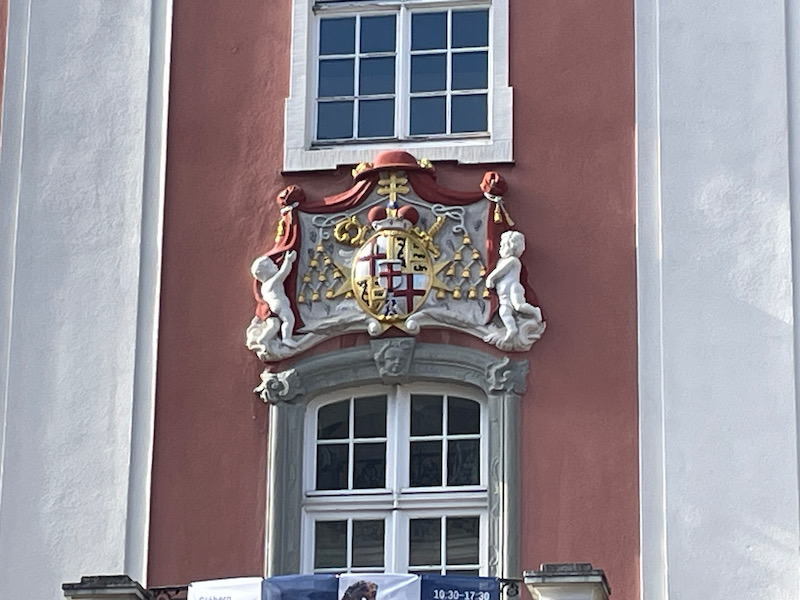
But we did take the tour through the Old Palace (since Lucy was allowed). As I mentioned before, the castle dates back to the 7th century. It sits up on a promontory (which you can see how high up it is over the now-empty-moat. You can also see a mill that was in the moat, with it's wooden waterwheel, that dates back to at least 1323 (there is a report of the mill in the castle moat at that time).
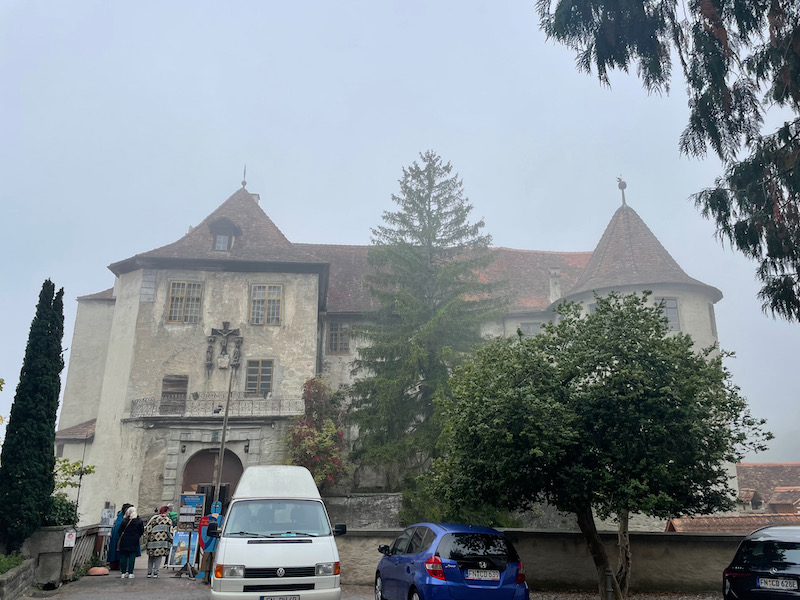
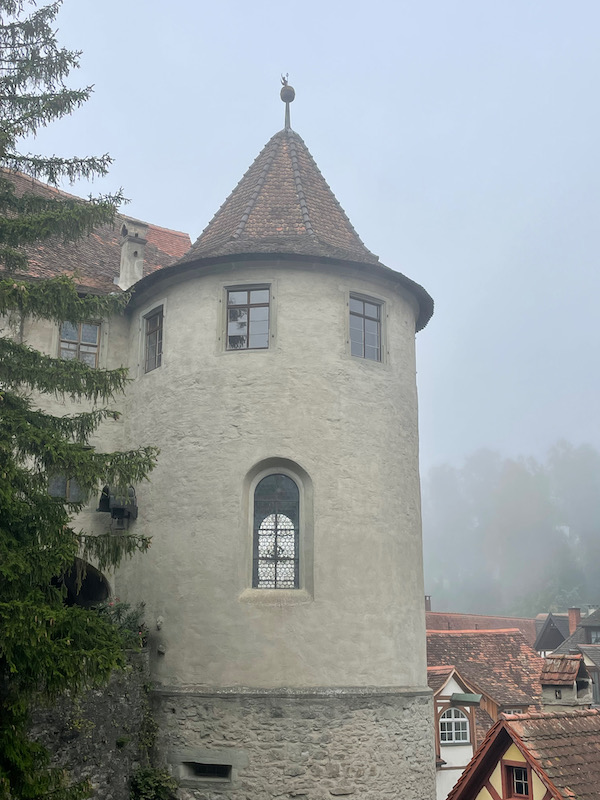
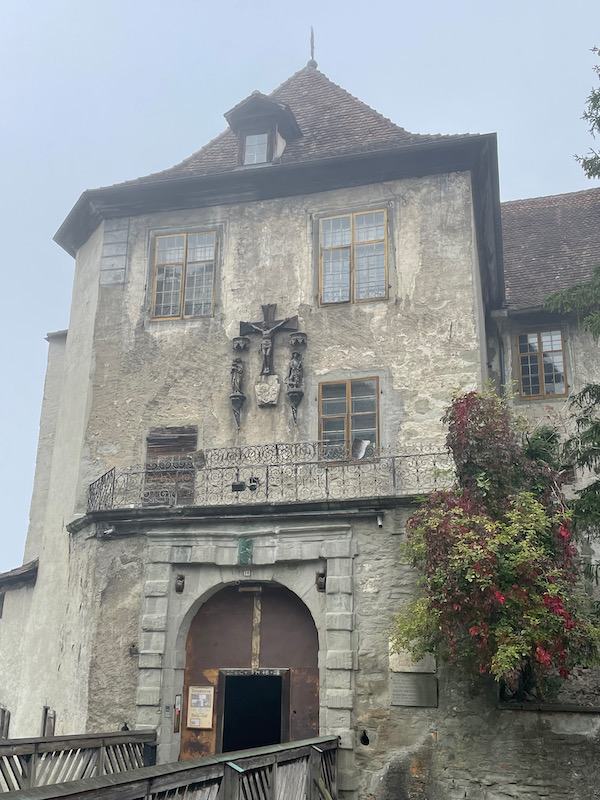
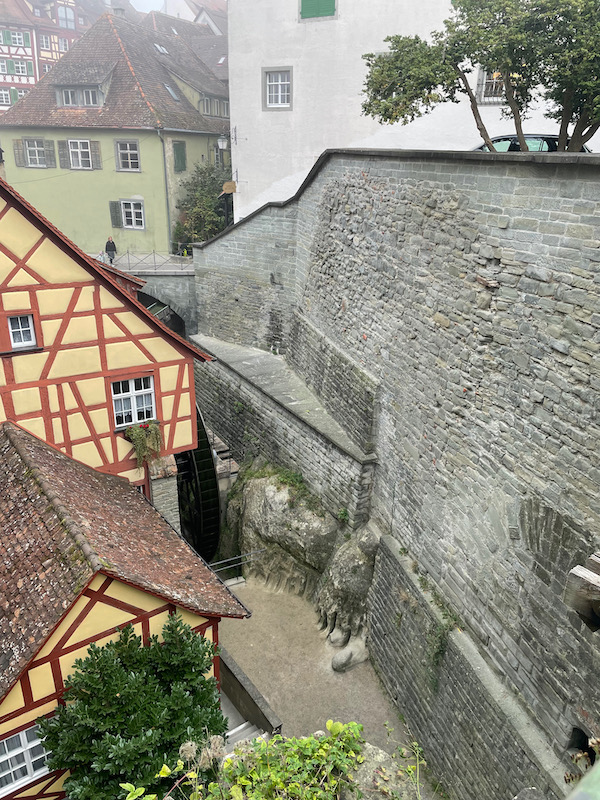
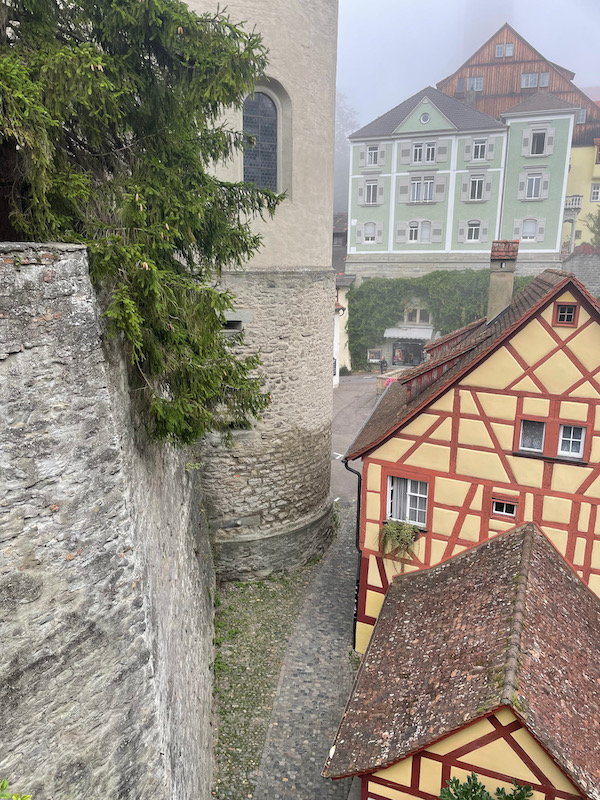
There used to be a drawbridge over the moat that was worked from the first room in the castle. This gate-room has a crucifix and other religious objects from the 15th century. If you look above it ... they are leather buckets that were used to put out fires. You can also see the large spool that was used to raise and lower the drawbridge, as well as an interesting painting showing a cut-off hand. This is a warning of the punishment for people who disturb the peace.
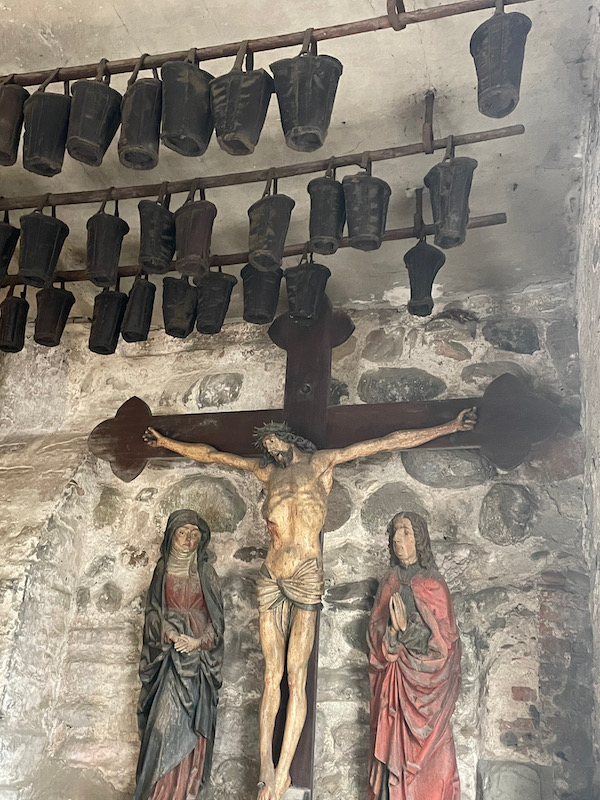
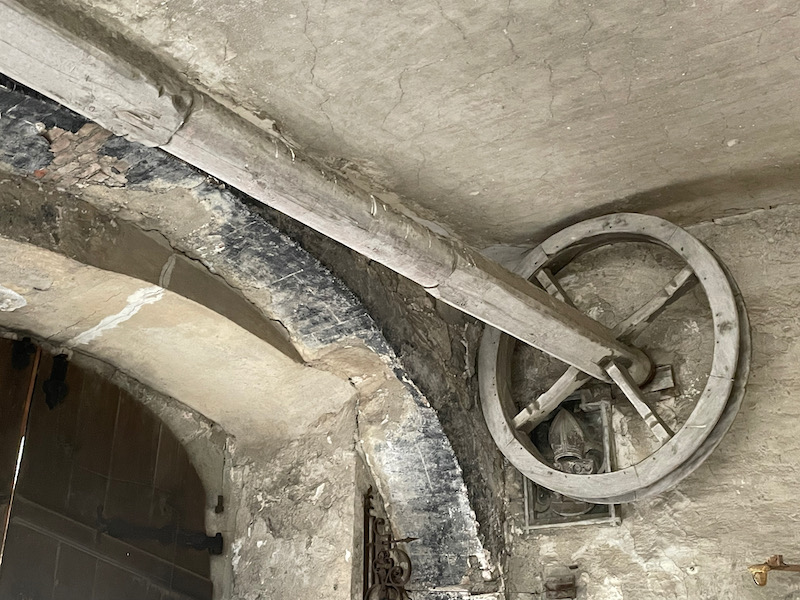
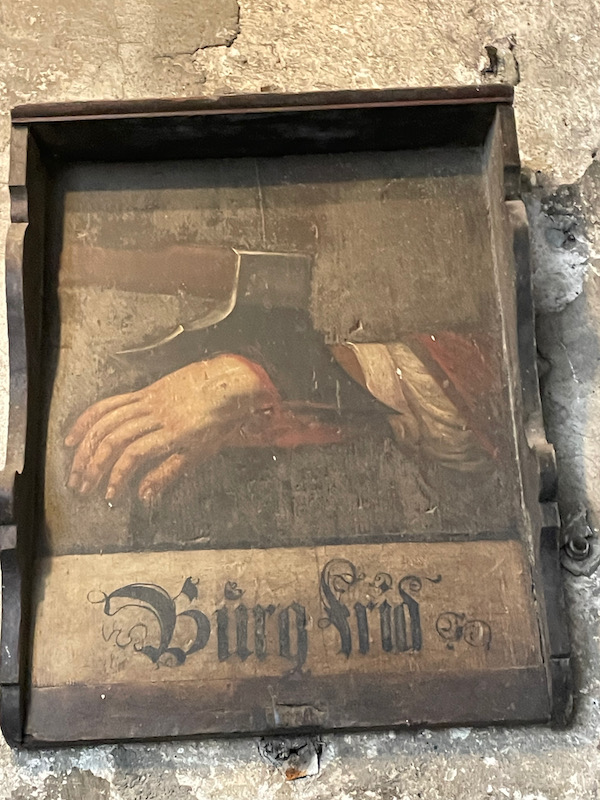
Just inside this gate room are a few rooms for the guards. You can see how thick the walls are ... 3 meters thick!
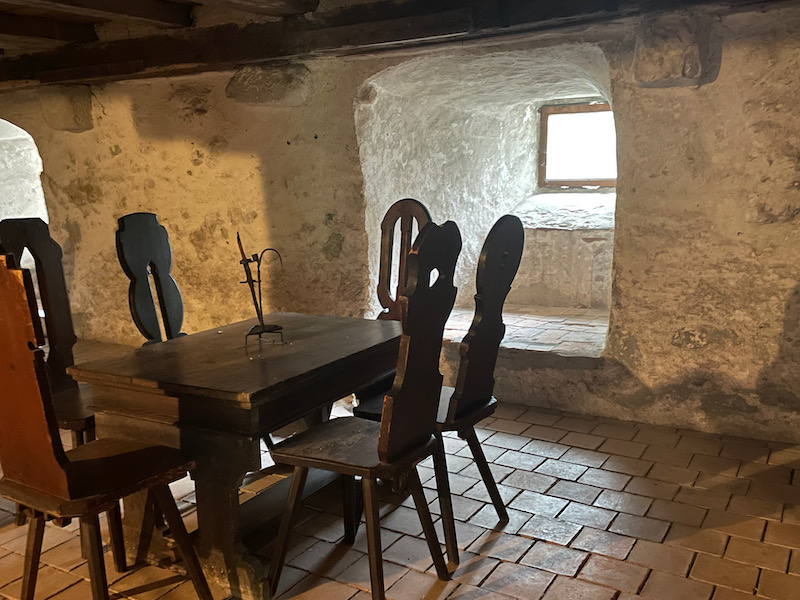
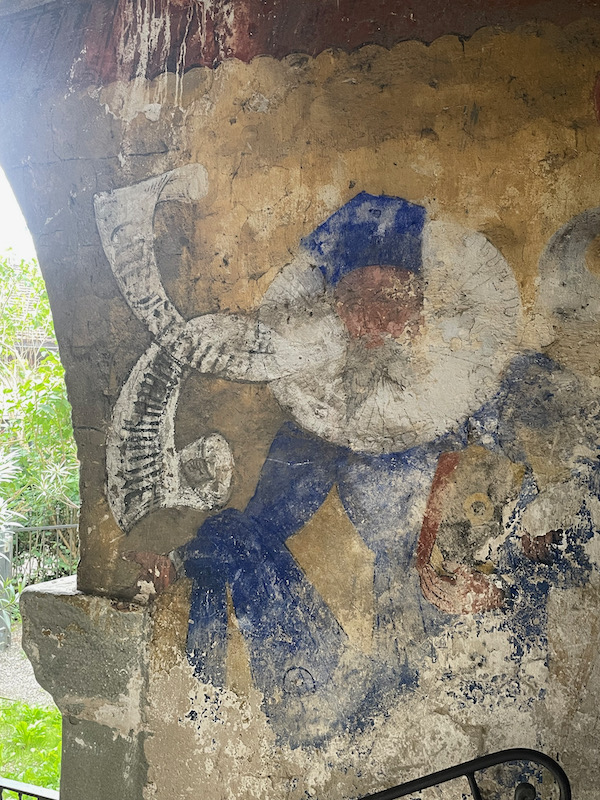
This room gives an example of what life was like in the castle around 1300. The heater in the corner with the tiles was added in the 17th century. The furnishing date back to 14th century although they weren't specifically in this castle.
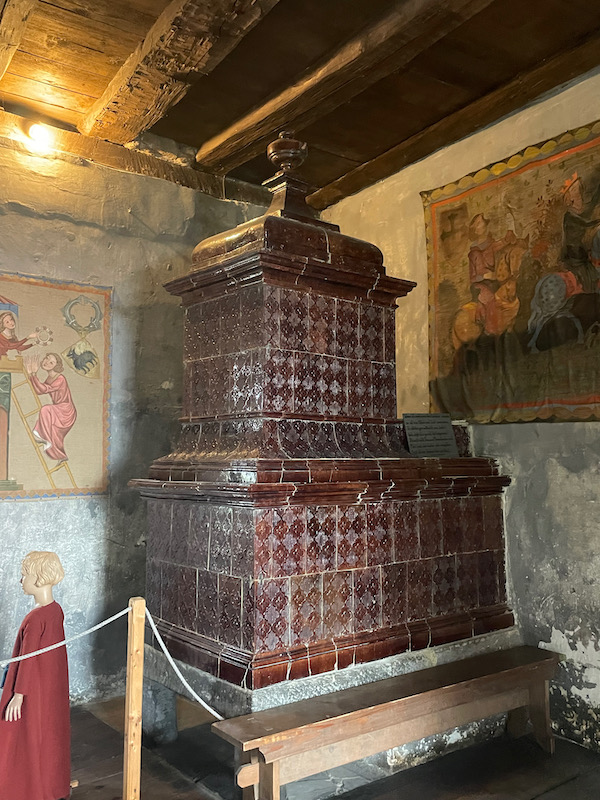
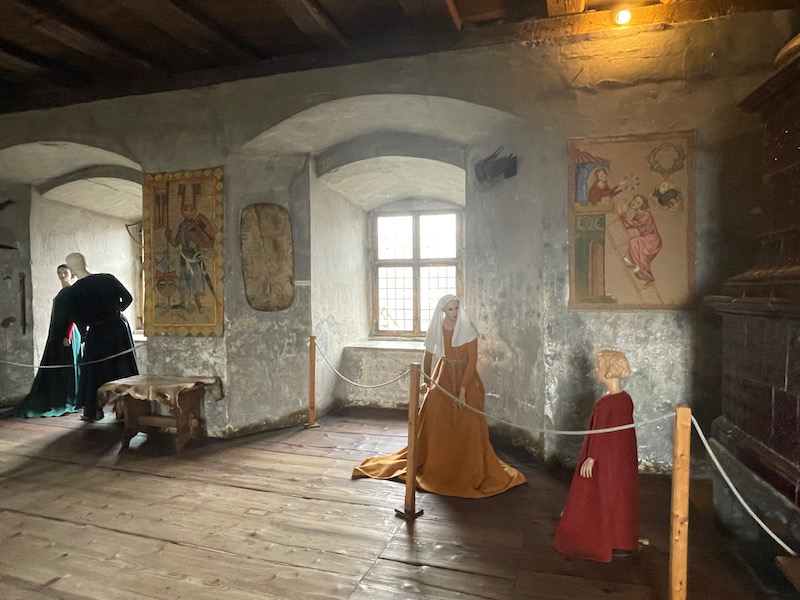
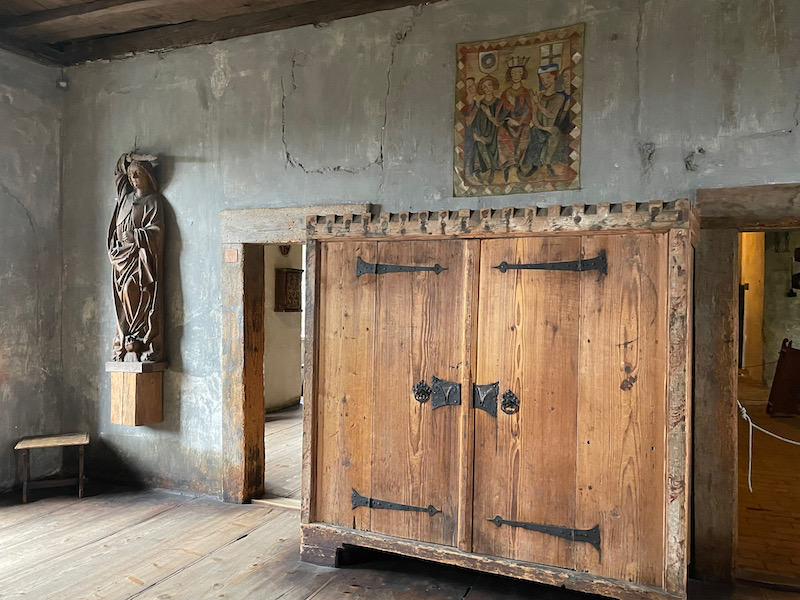
The next room dates from the 15th century. There is a wooden box seat with a painting above with 2 apostles. The suit of armor is Saint George, the patron saint of knights. The thick books on the shelf also date from this time.
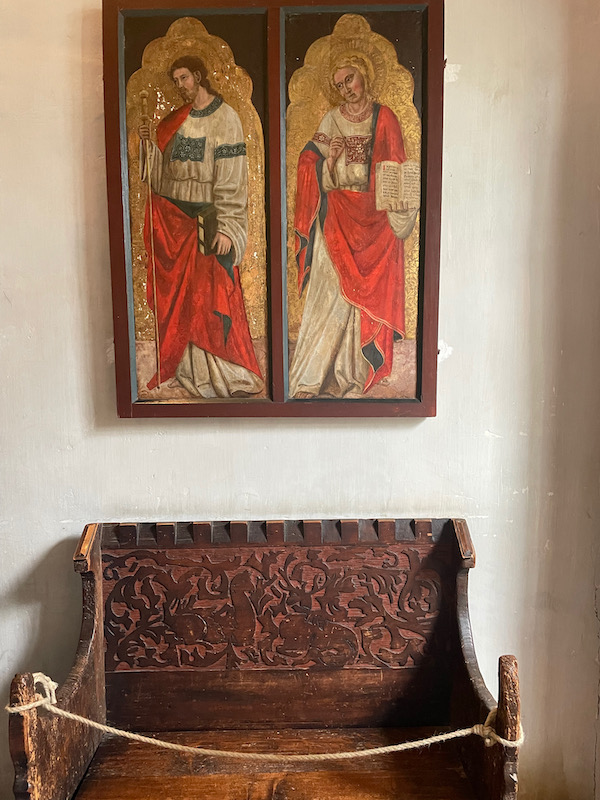
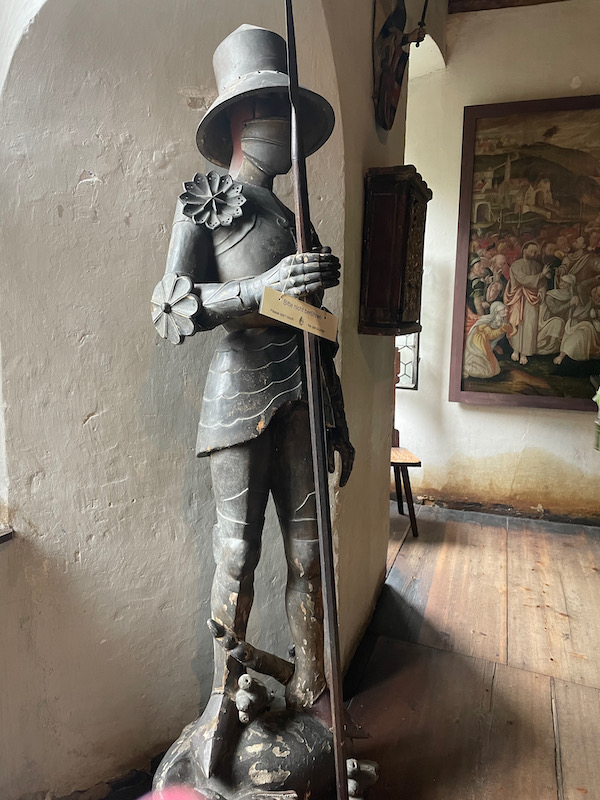
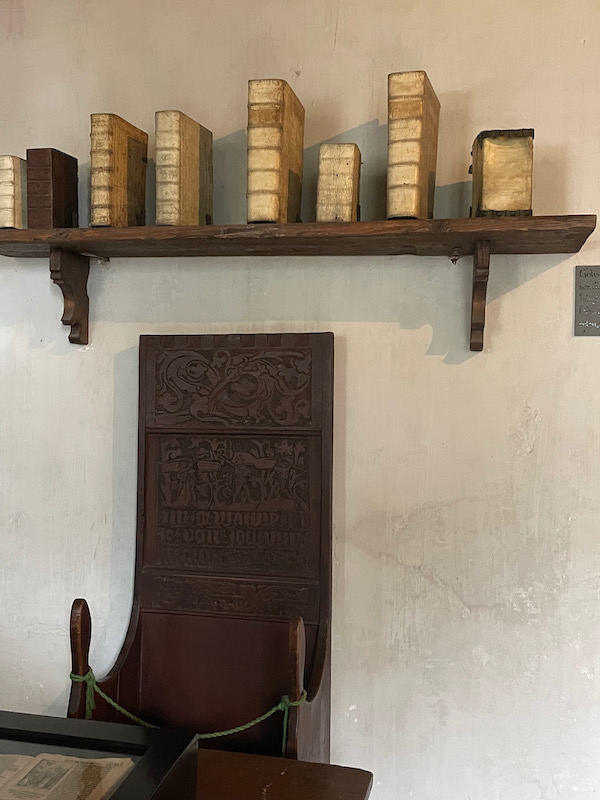
Moving forward in time, the Renaissance room is decorated with furniture from the 17th century, including an Ulmer cupboard and a very unique chandelier.
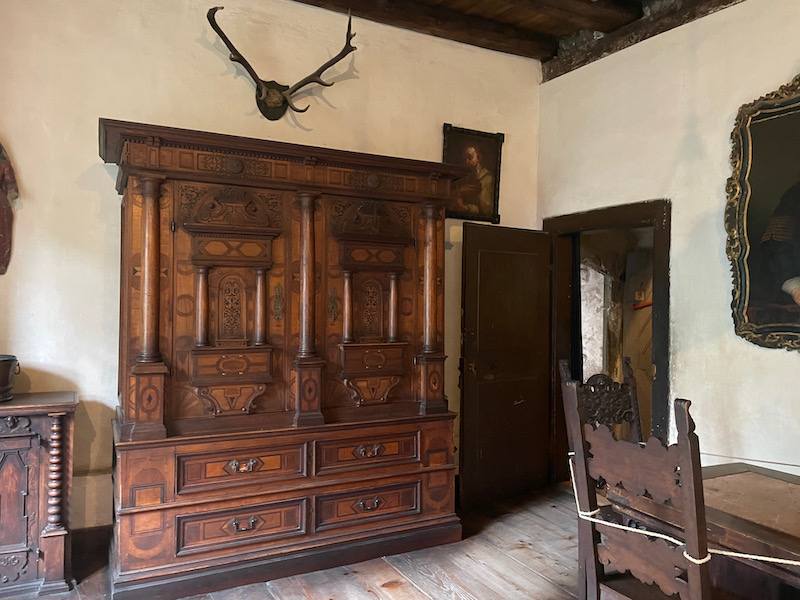
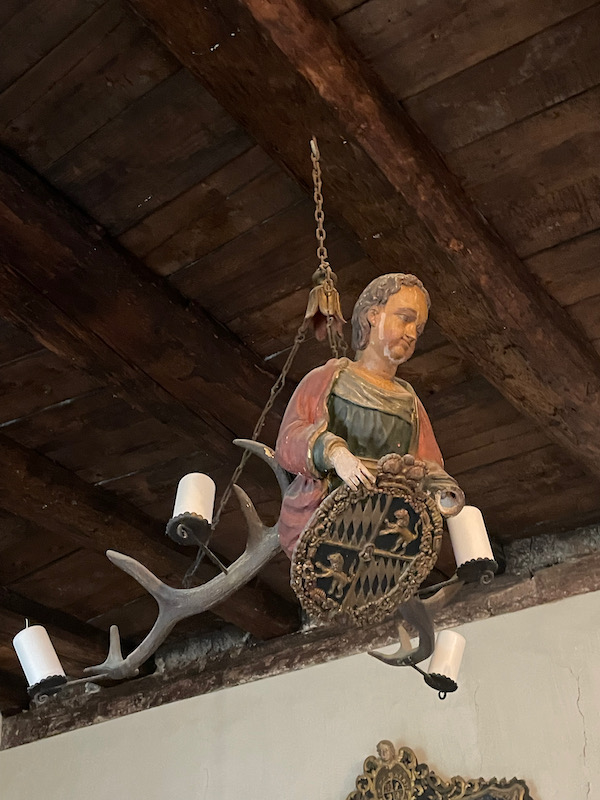
The well was dug in 1334 to provide the castle with drinking water directly from the lake surface in the case of an impending siege. It is actually in what previously had been the entrance hall (you can see the wooden staircase behind it).
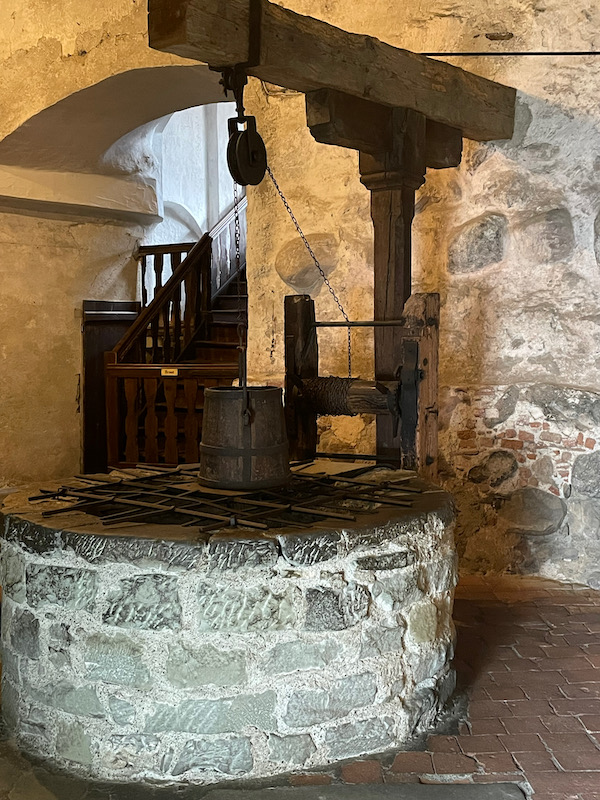
The Hall of Arms includes a set of armor dating back to 1570-1680. There are also swords and daggers from 1450-1700 ... Lucy thinks that she should get one of these swords for Christmas!
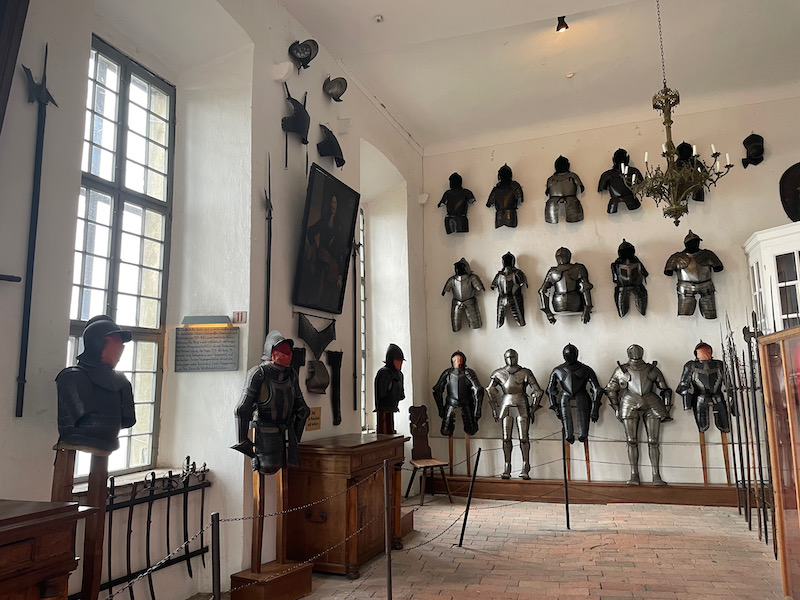
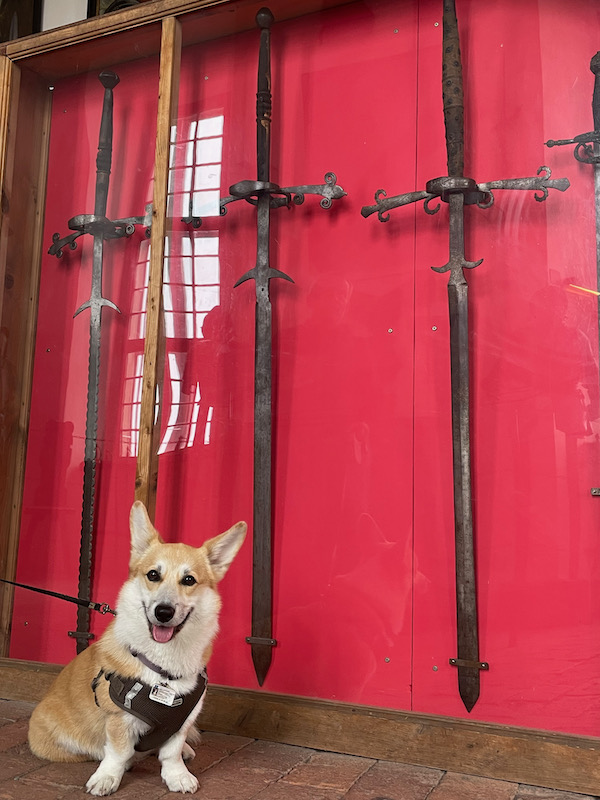
I thought this was great ... a door handle that actually has a hand on it (see the fingers???)
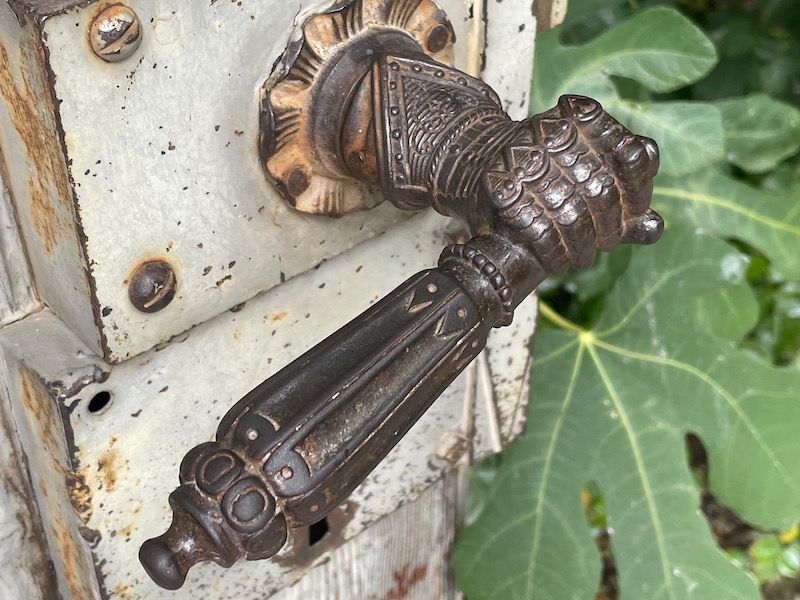
The castle has a small garden that, according to the brochure, offers a magnificent view of Lake Constance and the Swiss Alps .... not that we could see much. I was able to see a couple waves on the water, but that was about it.
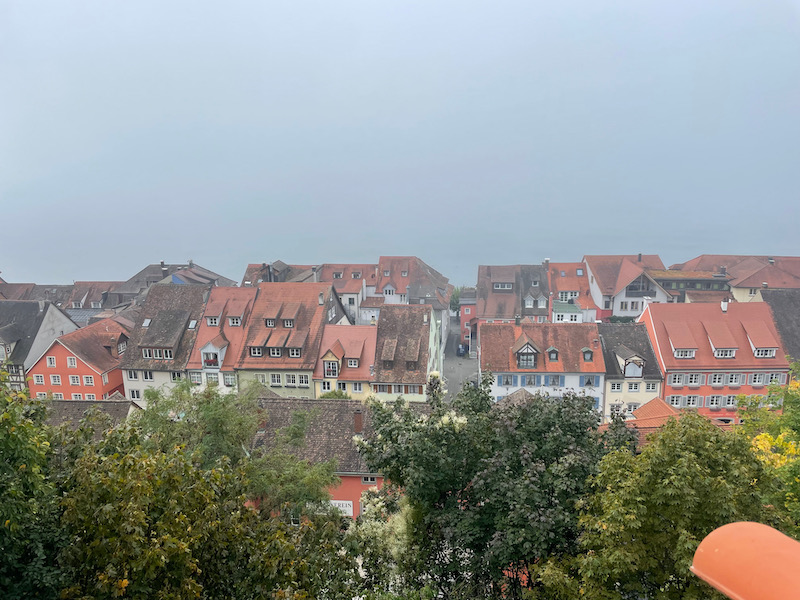
There were also several rooms dedicated to Annette von Droste-Hütshoff, a German poet from the 19th century. She visited Lake Constance very often and later lived in the castle with her brother-in-law, Baron Josef von Lassberg, from 1841 until her death. And in fact, she died in this very room. There are a couple additional rooms with cabinets containing volumes of her poems and other collected works.
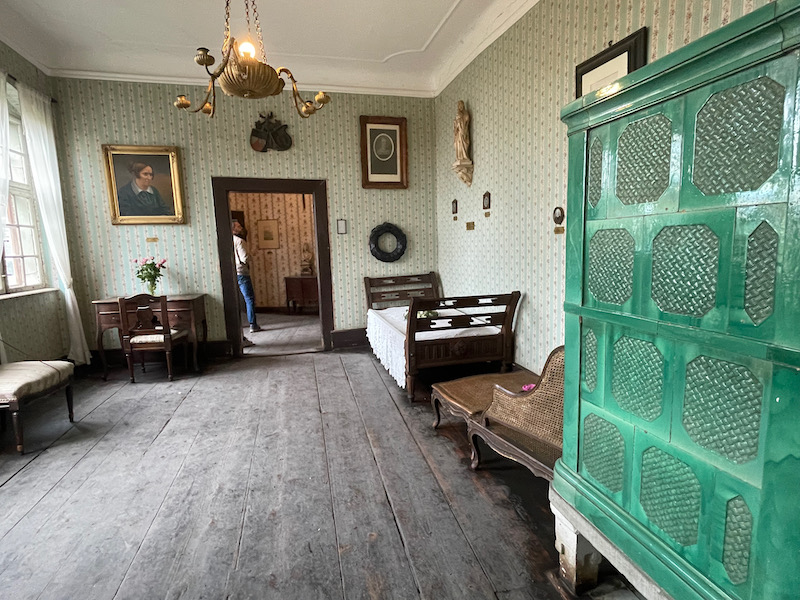
This is called the Old Parapet Walk, which is where the soldiers would defend the castle from.
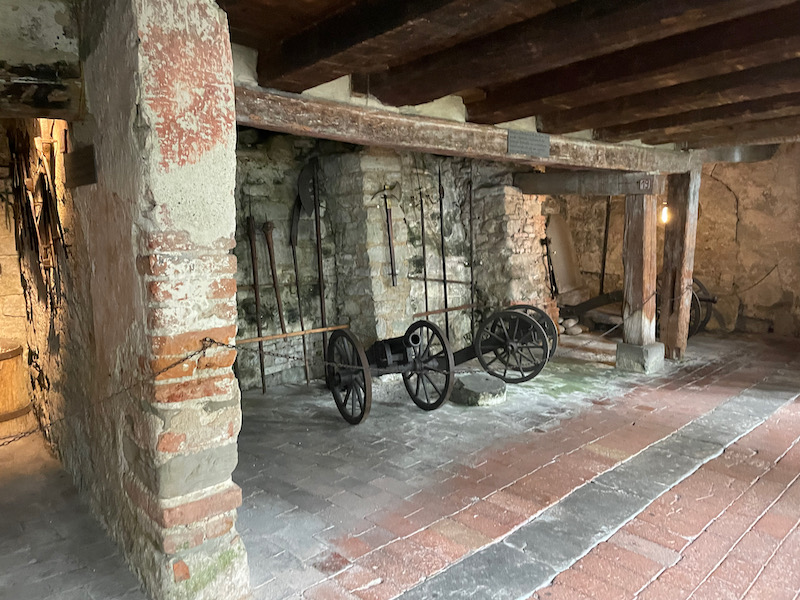
Then the bakery, which was needed to ensure that the castle was self-sufficient. I'm not sure who ate more bread ... the French or the Germans! The brochure says that up until the 16th century, bread was the most important source of nutrition and a person would consume 1 kilo of bread per day (that is over 2 pounds)!! Next to the oven was the staff kitchen, where the meals for the staff and servants were cooked. There was a different kitchen to prepare the meals of the owners.
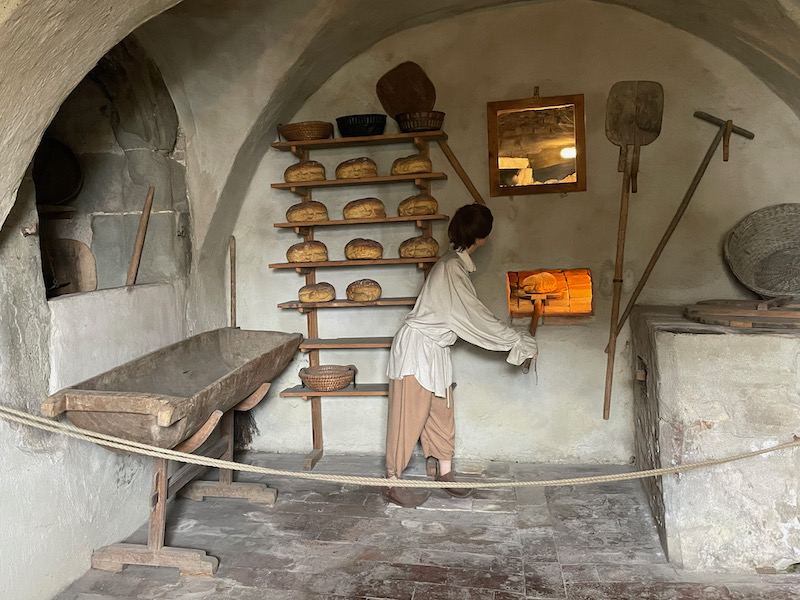
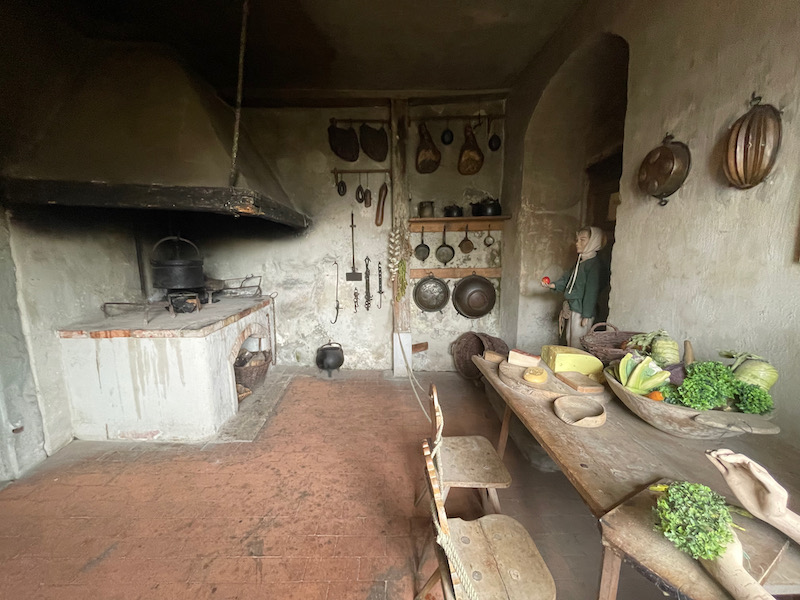
Every castle had to have its own little chapel as well. This was the original chapel, used up until the 17th century when another chapel was built.
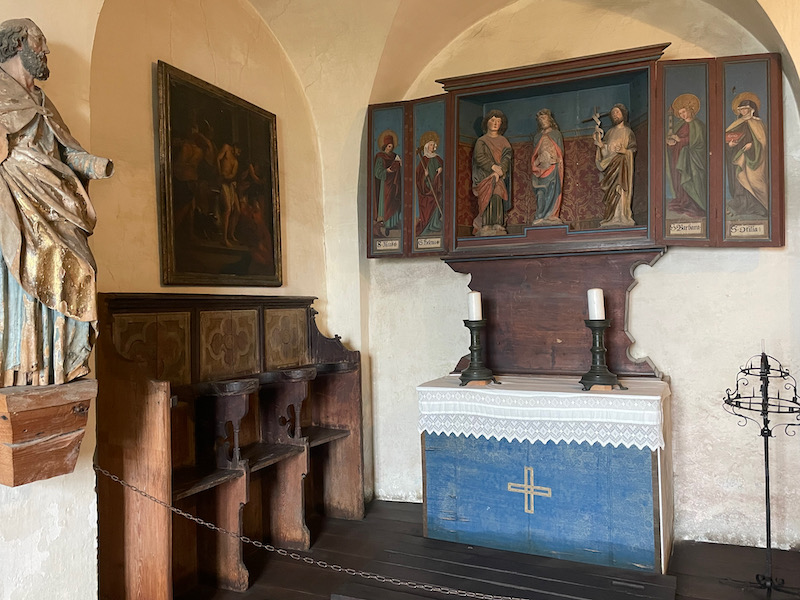
The dungeon is about 9 meters deep. The prison would be lowered down on a wooden bar and, in some cases, left to starve to death.
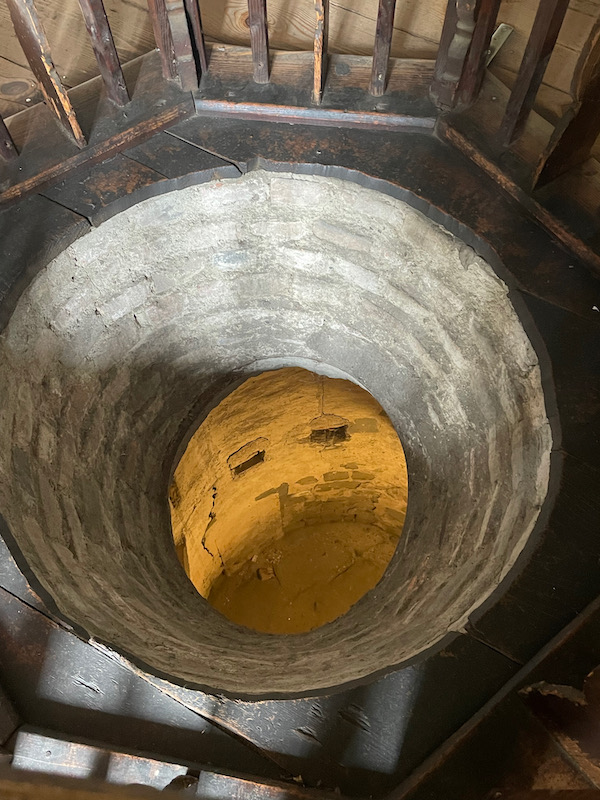
In one of the rooms was a Helmet exhibition, with various medieval tournament helmets from the 13th to the 16th centuries. Some are more interesting than others, but I think the one with the dog would be great for Lucy.
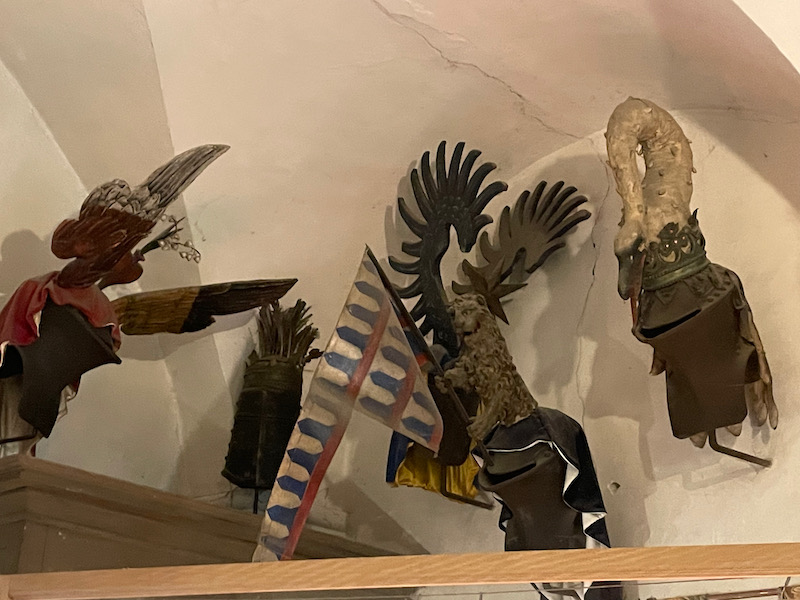
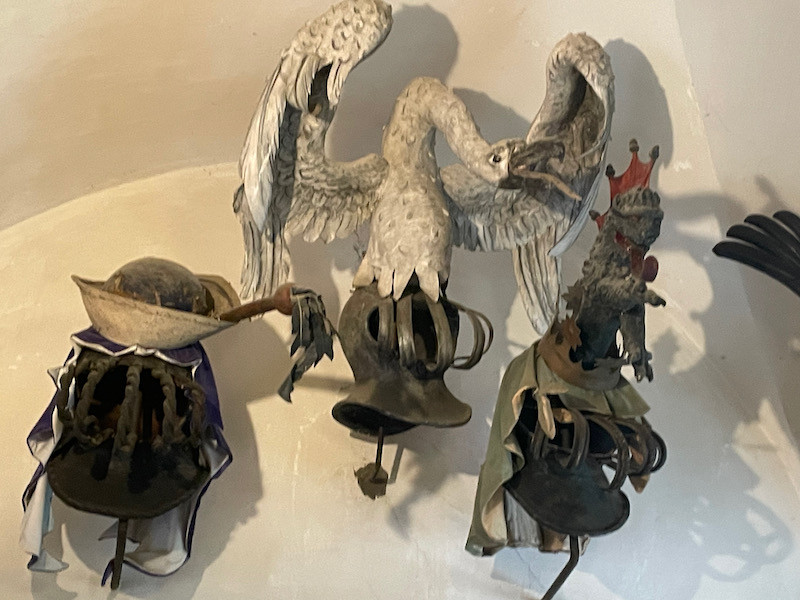
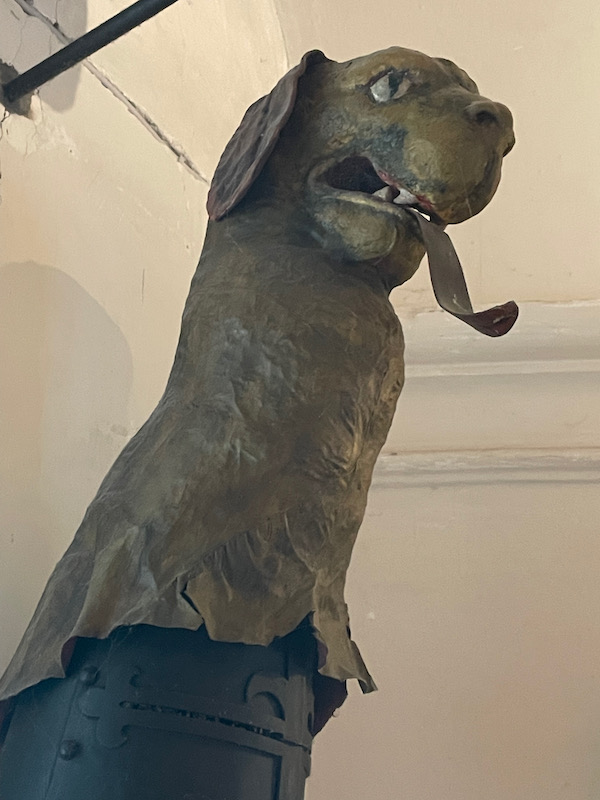
Here is the new chapel that was added in the 17th century.
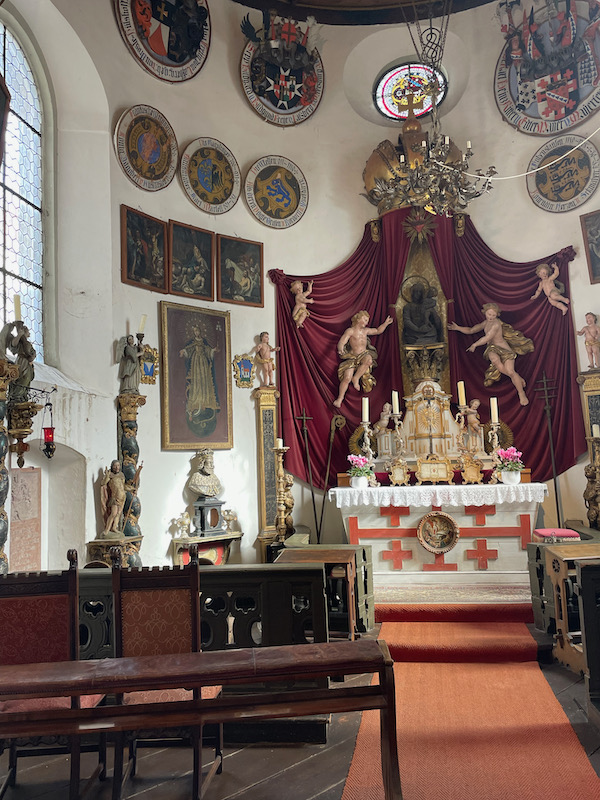
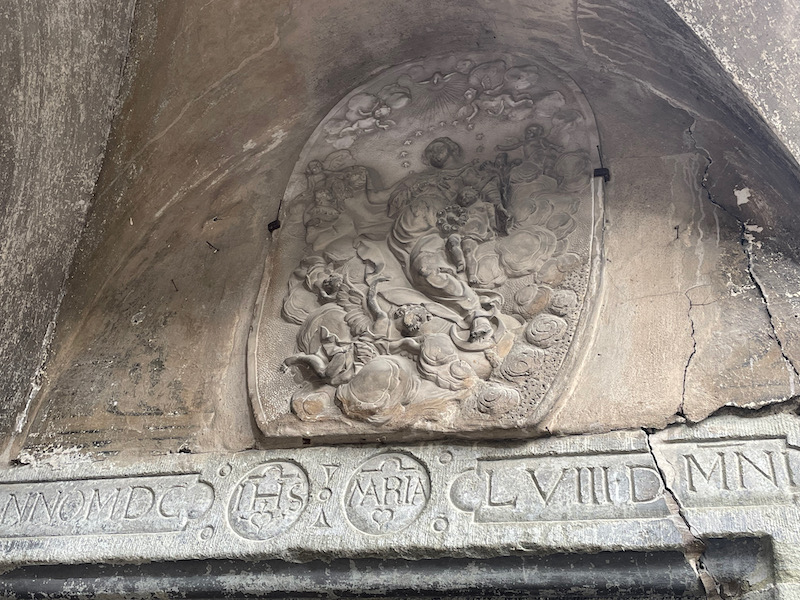
As we headed out of the old town, I happened to glimpse one of the two remaining towers.
